
Bathroom
Choosing Bathroom Fixture Finishes - Inspiration & FAQ
10.22.2025
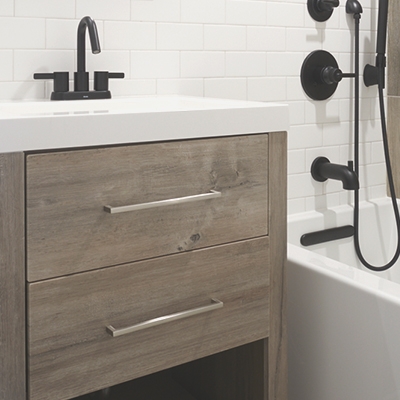
In This Article
Getting ready for a small bathroom remodel? Choosing the right bathroom vanity is a key step, and it can truly make a difference. Not only does the perfect vanity add style, but it also boosts the room's usefulness. Imagine a space that feels open and stylish, even when square footage is tight. This guide will walk you through clever bathroom vanity ideas, ensuring your remodel is both beautiful and practical.
When planning a small bathroom remodel, figuring out how to use your space wisely is super important. Start by measuring your bathroom accurately to avoid any fitting mishaps and ensure a smooth layout. Knowing exactly how much space you have will help you plan for a vanity that not only fits but also enhances movement and minimizes clutter.
Renovate with confidence every step of the way
Step 1: Personalize Your Renovation Plan
Step 2: Receive Quotes from Trusted Contractors
Step 3: Let Us Handle the Project Details

Taking precise measurements is the first step toward a successful small bathroom remodel. Start by measuring the length and width of your bathroom, noting down any nooks or irregular spaces. Don’t forget to measure the height; this will help when considering things like wall-mounted vanities. Accurate measurements help you avoid those frustrating fitting issues that can delay your remodeling efforts.
After measuring, think about the layout and how your vanity will impact traffic flow. It’s essential to position the vanity in a way that allows for easy movement, particularly in such a confined space. A well-placed vanity can make your bathroom feel open and prevent clutter from piling up. Keeping these factors in mind will ensure that your design enhances usability and aesthetics, both crucial goals in a small bathroom remodel.
Before diving into your bathroom remodel, it's important to evaluate your current storage situation. Take a look around your bathroom and think about what's lacking. Are your toiletries and towels crammed into too-small spaces, or do you have items stored elsewhere because there's just no room? Understanding what you’re missing can guide your choices when it comes to choosing the right vanity and storage solutions.
When it comes to maximizing storage in a small bathroom, creativity goes a long way. Consider these practical suggestions:
Vertical Shelving: Use the walls to your advantage by adding shelves that go upward. This keeps items within reach without taking up floor space.
Mirrored Cabinets: These serve dual purposes—providing storage while also making the room appear larger with the reflection from the mirror.
Optimized Cabinetry: Consider a vanity with built-in storage options like pull-out drawers or sliding doors. These can keep essentials organized and easily accessible.
By focusing on space maximization, you’ll create a neat, tidy area that meets all your storage needs in style.
Choosing the right type of vanity can make all the difference in a small bathroom remodel, both in terms of style and space management. With various options available, you can select one that suits your taste while making the best use of your limited space. Let's dive into some popular vanity types that can enhance both the look and function of your bathroom.

Advantages: Wall-mounted vanities are a fantastic option for small bathrooms because they save valuable floor space. By being attached directly to the wall, they allow the floor underneath to remain visible, creating the illusion of a more spacious room. This open space can make your bathroom feel larger and more open, a real bonus when square footage is limited. Plus, cleaning becomes easier with no base to work around.
Style Recommendations: When it comes to style, wall-mounted vanities can be incredibly versatile. Opt for sleek, contemporary designs that boast clean lines and minimalist aesthetics. These designs complement modern bathrooms but can also blend well with transitional decor. Consider options in neutral tones or bold, glossy finishes that add a touch of elegance without overwhelming the space.

Space Efficiency: Corner vanities are excellent for maximizing space utilization in small bathrooms, especially those with unique or unusual shapes. By fitting snugly into a corner, they make use of otherwise wasted space, freeing up more area for movement. This arrangement can help create a more open feel and improve the bathroom's overall functionality. It's an ideal solution for oddly-shaped bathrooms where traditional designs won't fit as neatly.
Design Flexibility: When it comes to style, corner vanities offer great adaptability. Whether your taste leans toward rustic charm or sleek modernity, there's likely a corner vanity style to match. Rustic styles with wooden finishes can add warmth and character, while modern designs in glass or polished metals bring a contemporary flair. With such varied options, corner vanities can seamlessly integrate into any bathroom theme.

Design Varieties: Freestanding vanities offer an exciting array of design options to suit every preference. Whether you're drawn to classic styles with intricate moldings and rich wood finishes or modern designs with stainless steel and sleek lines, freestanding vanities have it all. Their versatility allows for easy customization, so you can incorporate unique colors, hardware, and materials to fit your personal style. This choice of customization makes them a favorite for those looking to give their bathroom a personalized touch.
Installation Insights: One of the great advantages of freestanding vanities is their straightforward installation process, a feature that makes them popular among DIY enthusiasts. Unlike wall-mounted or corner varieties, freestanding vanities require no special brackets or wall reinforcements, making the setup typically more manageable. However, it's important to ensure proper alignment with existing plumbing and floor levels to avoid any vanity installation hiccups. This ease of installation means you can enjoy both style and functionality without a fuss, making it a smart pick for remodelers of any skill level.
Perfect Every Detail of Your Bathroom
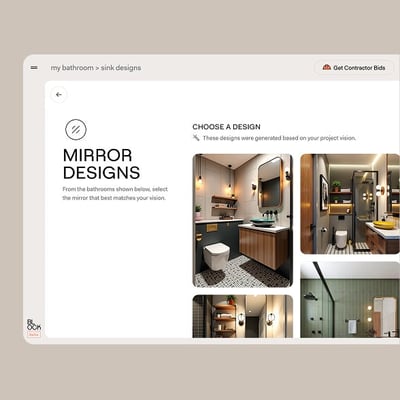
Choosing the right materials and finishes for your bathroom vanity is crucial for both durability and style. With so many options available, it's important to find ones that not only withstand the bathroom environment but also complement your overall design vision.
Material Durability: The bathroom environment requires materials that can withstand moisture and wear over time. Here's a look at some popular choices:
Aesthetic and Maintenance: Different materials offer unique aesthetics while also impacting the level of maintenance required. Solid wood provides a warm, rich look that complements traditional and transitional styles, but it requires regular sealing and occasional polishing to maintain its appearance. MDF, on the other hand, is versatile in design since it can be painted or laminated in various colors and textures, making it a low-maintenance option, but quick action is required on spills to prevent damage. Glass creates a contemporary, airy feel perfect for modern bathroom aesthetics, yet it demands regular cleaning to prevent water spots and scratches. Selecting the right material allows you to balance style, maintenance, and durability, ensuring your vanity meets all your needs.
Finishing touches play a vital role in tying together your bathroom vanity's overall look and style. Current trends in colors and finishes offer a range of choices to suit different preferences. Matte finishes are gaining popularity for their sleek, understated elegance and are ideal for modern minimalistic bahthroom designs, while gloss finishes provide a reflective, vibrant look that adds a touch of luxury.
Popular color palettes include soft neutrals like white and beige, which create a calming atmosphere, alongside bolder choices like navy blue and emerald green that make a trendy statement. When coordinating your vanity's finish with tiles and wall colors, consider complementary shades and textures. For instance, if you opt for a matte finish, pairing it with glossy tiles can create a balanced yet dynamic contrast. Ensure that the colors and textures harmonize with the overall bathroom style to achieve a cohesive and inviting space.
In a small bathroom, functional yet stylish design elements can make all the difference in enhancing both utility and aesthetics. From sinks and countertops to mirrors and lighting, choosing the right features can transform your vanity into a centerpiece of both form and function.
Sink Types: When selecting a sink for your vanity, you typically have two popular options: top mount and undermount sinks. Top mount sinks sit above the countertop, making them easier to install and compatible with most countertop materials. However, they can appear bulkier and make cleaning the countertop surface a bit more challenging. On the other hand, undermount sinks, which are attached beneath the counter, offer a sleek, clean look that’s easier to clean but may require a stronger countertop material, such as stone, for proper installation.
Countertop Materials: The choice of countertop material significantly affects both the durability and visual appeal of your bathroom vanity. Quartz is a top choice for many due to its high durability, low maintenance, and variety of design options. Marble offers your bathroom a luxurious look with unique veining, but it requires regular maintenance to avoid staining and etching. Laminate, while more budget-friendly and available in numerous designs, is less durable than stone options but can be a practical choice for those prioritizing cost.
Mirror Impact: Mirrors can make a big difference in a small bathroom by enhancing both style and space perception. Innovative mirror designs, such as those with built-in LED lighting or unique shapes like oval or geometric patterns, add a modern touch while maximizing light reflection. Frameless mirrors or those extending from wall to wall can create the illusion of a larger room, helping your small bathroom feel more open and airy.
Lighting Considerations: Lighting is key to a functional and inviting bathroom vanity area. Ambient lighting, such as ceiling fixtures or recessed lights, provides overall illumination that fills the room evenly. For tasks that require precision, like applying makeup or shaving, focused lighting options such as strip lights above the mirror or side sconces work best. Adjustable fixtures allow for versatility, enabling you to change lighting levels based on your needs. Together, well-chosen mirrors and lighting can transform your bathroom into a bright, welcoming space.
Planning a bathroom remodel requires careful budget considerations to ensure you achieve your desired look without overspending. By understanding the cost factors and exploring smart saving strategies, you can successfully upgrade your bathroom without breaking the bank.
Know the Cost Before You Start

When setting a budget for your bathroom remodel, it's important to recognize the various factors that can impact overall costs. Materials play a significant role, with choices ranging from high-end options like marble and custom cabinetry to more budget-friendly selections such as laminate and prefabricated units. Installation costs also vary depending on whether you opt for professional help or tackle the project as a DIY endeavor. Additionally, the complexity of your design, including features like intricate tile patterns or custom lighting, can further influence expenses.
To save money without sacrificing quality, consider shopping during seasonal sales for discounts on fixtures and materials. Bulk purchasing can also reduce costs, especially for items like tiles or cabinetry hardware. Look for package deals that bundle multiple components, like vanities with sinks included. By planning carefully and taking advantage of these strategies, you can stretch your budget further and achieve the bathroom remodel you envision.
When deciding between DIY and professional installation for your bathroom vanity, it's important to consider the pros and cons of each approach:
DIY Installation:
Pros:
Cons:
Professional Installation:
Pros:
Cons:
In wrapping up your small bathroom remodel, selecting the right vanity can dramatically enhance both functionality and style. By carefully considering your space needs, type of vanity, material choices, and installation preferences, you can create a bathroom that meets your lifestyle and design objectives. Remember to balance practicality with aesthetics and to explore cost-saving strategies to keep your remodel on budget. Whether you choose to tackle the project yourself or enlist professional help, thoughtful planning ensures a successful and satisfying transformation.

Written by Block Renovation
Can I update my bathroom vanity without a full remodel?
What’s the best way to choose a vanity color that matches my bathroom?
What is the return on investment for upgrading a bathroom vanity?
What safety features should I consider when choosing a bathroom vanity for a family home?
Are there vanity options for dual sinks in small bathrooms?
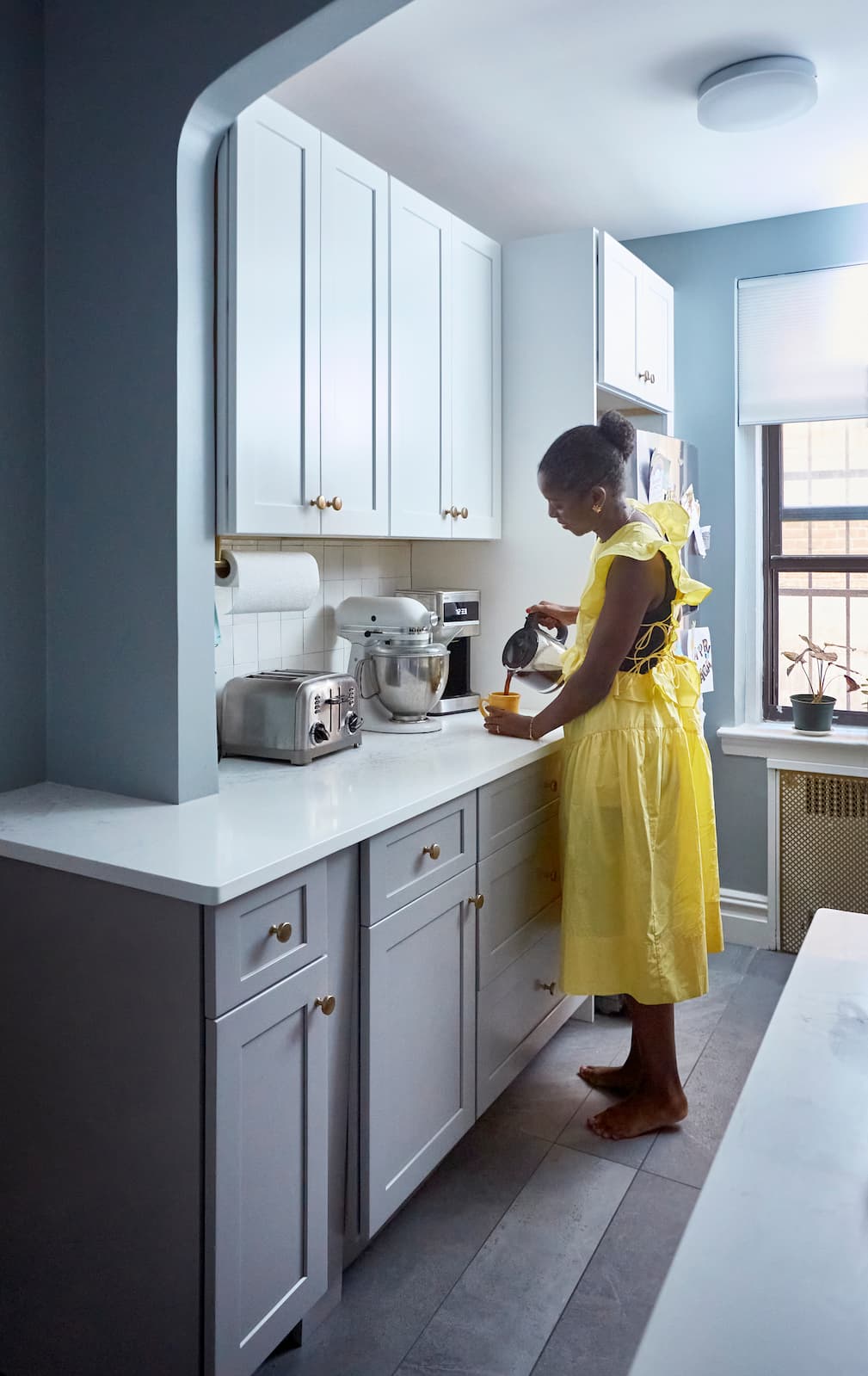
Renovate confidently with Block
Easily compare quotes from top quality contractors, and get peace of mind with warranty & price protections.
Thousands of homeowners have renovated with Block

4.5 Stars (100+)

4.7 Stars (100+)

4.5 Stars (75+)

Bathroom
Choosing Bathroom Fixture Finishes - Inspiration & FAQ
10.22.2025
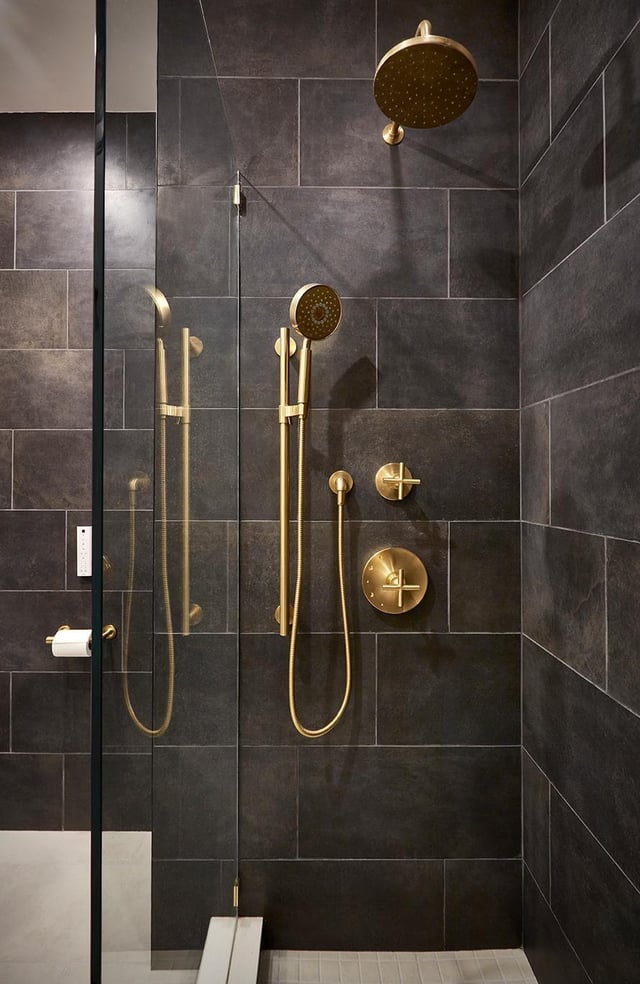
Bathroom
Designing a 40-Square Foot Bathroom? Here’s What Actually Matters
10.22.2025
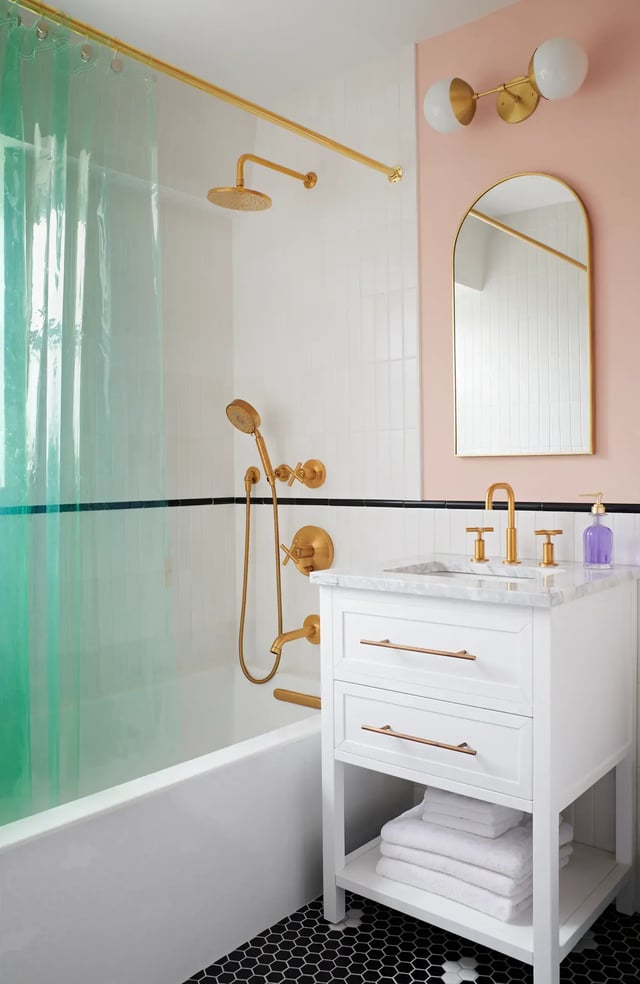
Bathroom
Different Types of Bathroom Sinks
10.22.2025
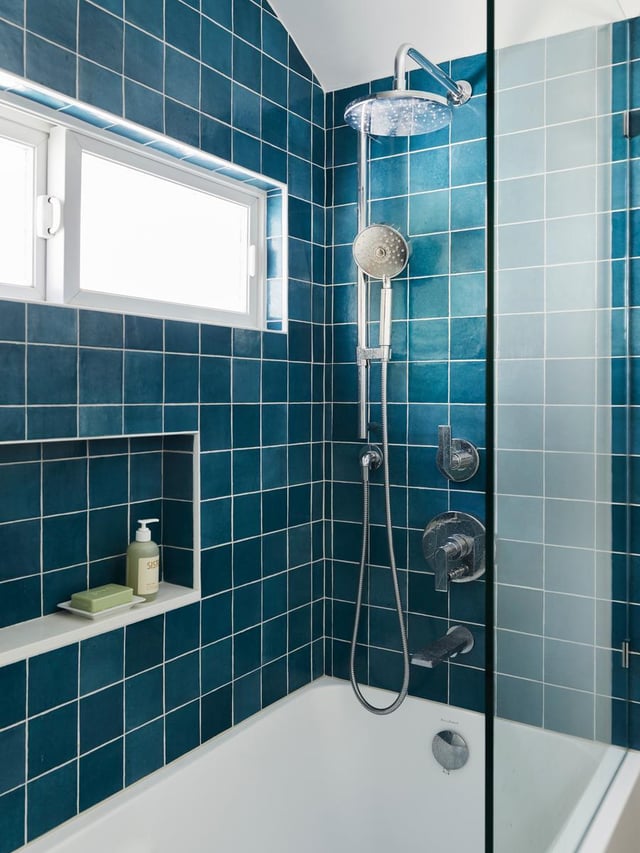
Bathroom
Showers with Windows to Inspire Your Bathroom Design
10.22.2025
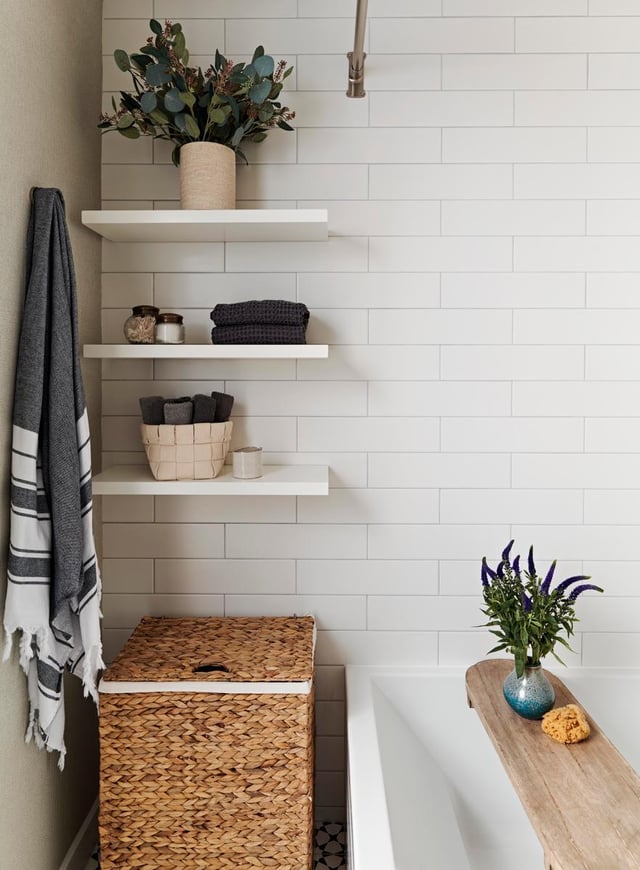
Bathroom
Small White Bathroom Design Ideas
10.22.2025
Renovate confidently